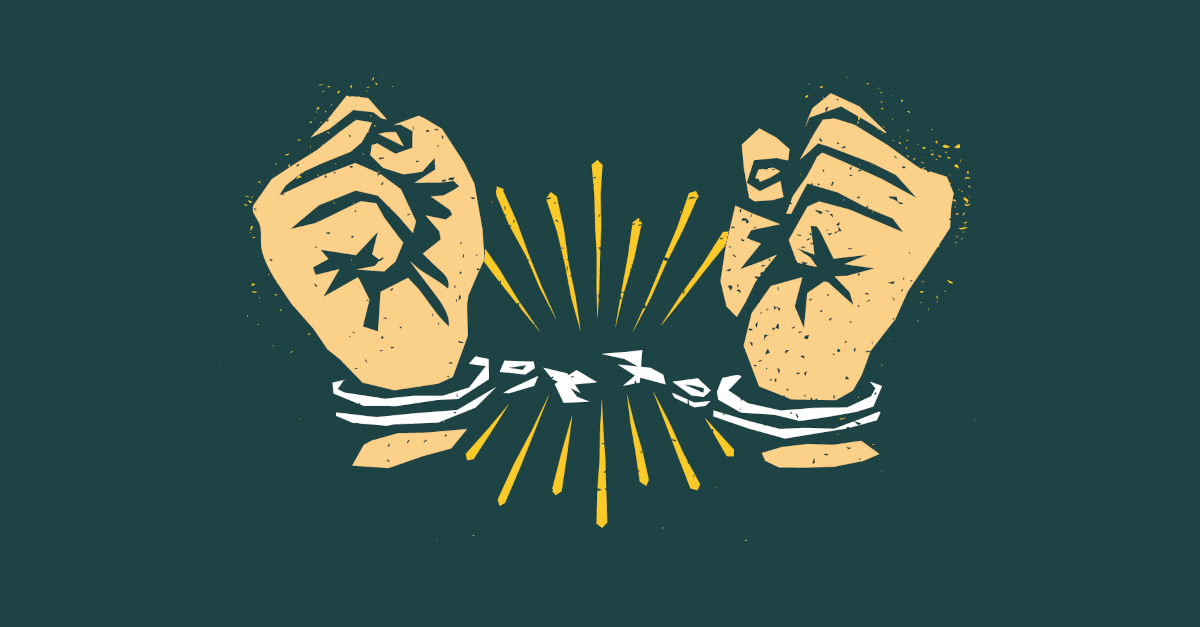Remember the last big jailbreak news?
It was nearly a year ago, back in May 2020, when well-known Apple jailbreaking crew unc0ver released version 5 of their jailbreak toolkit, just a week after Apple came out with iOS 13.5.
The word jailbreak, at least in the IT world, is a generic term for a programming trick that can liberate locked-down hardware from the strictures that the manfuacturer built into it.
But these days, jailbreaking most commonly refers to a very specific sort of unlocking tool: one that can release your iPhone or iPad from Apple’s notoriously strict walled garden.
(On locked-down Android phones, the process is more commonly known as rooting, because root is the name given to the one-admin-to rule-them-all account on Unix and Unix-like operating systems.)
Jailbreaking, as we have said before, can be a risky business, because in the process of jailbreaking you’re actively and deliberately exploiting a security vulnerability that wasn’t supposed to the there in the first place.
As appealing as it sounds to “escape” from Apple’s walled garden, jailbreaking is not for the faint-hearted, because it can leave you exposed to more dangers than before.
In fact, the only cases we know of where iPhone worms have been able to spread from device to device by themselves has been on jailbroken phones, where applying the jailbreak inadvertently opened up devices to remote connections that were blocked before.
What’s all the fuss about!?
Opponents of jailbreaking argue that it should be banned because jailbreaks can be used to bypass copyright protection and anti-piracy measures.
The say jailbreaks make it too easy to get your device into an insecure state, especially if your reason for jailbreaking is to install hacked or modified software that would otherwise not be allowed on the device.
Some argue that jailbreaking is pointless because Apple’s walled garden already provides vetted versions of all the software you could ever need anyway.
Proponents, however, say that banning jailbreaking to stop copyright infringement is a red herring.
After all, a non-jailbroken device can be used to access infringing material anyway, right there in your browser if you want, and no one is seriously suggesting banning iPhones (or the Safari browser) on that account.
Likewise, jailbreakers argue that jailbreaking is often the only way to increase security by allowing you to fix bugs that Apple hasn’t patched yet, or never will.
As for the walled garden argument, well, if you paid for your device out of your own after-tax income, and you own the hardware itself outright, jailbreaking means you can use your device as creatively or as ecologically as you wish, albeit at your own cybersecurity risk.
Is there a choice?
As we mentioned at the top of the article, the last – or, as you’ve probably figured out by now, the last-but-one – iPhone jailbreak only handled iOS versions up to iOS 13.5.
But that’s all changed in the past week, because on 2021-02-25, @Pwn20wnd of the unc0ver crew tweeted:
We wrote our own exploit based on CVE-2021-1782 for #unc0ver to achieve optimal exploit speed and stability.
— @Pwn20wnd (@Pwn20wnd) February 25, 2021
Next came @axi0mX, on 2021-02-27:
iPhone jailbreaking is not dead yet.@Pwn20wnd will be releasing #unc0ver 6.0.0 today:
* EVERY DEVICE, including A14 is supported
* EVERY VERSION, iOS 11.0 – iOS 14.3Thanks @Pwn20wnd. Let's get #unc0ver trending again.
— axi0mX@infosec.exchange (@axi0mX) February 27, 2021
And an update to the update arrived this week on 2021-03-02:
unc0ver v6.0.1 is NOW OUT with improvements to iOS 14 support.
— @Pwn20wnd (@Pwn20wnd) March 2, 2021
It now looks as though at least one of the “in the wild” security vulnerabilities that Apple patched unexpectedly and in a vague shroud of secrecy at the end of January 2021…
…was patched as an anti-jailbreaking measure, given the mention of CVE-2021-1782 (a kernel-level privilege elevation hole allowing complete device take-over) in @Pwn20wnd’s tweet above.
So if you followed our advice to “patch early, patch often” (and please see below why we still think applying Apple updates as soon as you can is a wise move), you will already be on iOS 14.4, and that’s the one version that this new jailbreak can’t handle.
Part of Apple’s anti-jailbreaking protection includes measures to prevent you from downgrading, which deliberately stops you reverting to older, known-buggy versions of iOS when a new jailbreak comes out. (Sorry, folks,)
Just remember
Sophos strongly recommends against jailbreaking Apple devices.
So, if you do decide to go down the jailbreaking route on your iPhone or iPad just remember:
- Your device might never work again. This is called bricking your phone because it turns your device into a very expensive paperweight, a job more cheaply and reliably done by a humble housebrick. Jailbreaks involve running code that Apple really doesn’t want you to, so there’s plenty that could go wrong.
- If it’s listed as a “tethered” jailbreak your phone will not be able to reboot on its own. If your battery runs down or the phone crashes, you will need to plug it into your laptop – that’s the tethering part – before it will restart properly.
- It’s easy to get security settings wrong. As we mentioned above, the only self-spreading iPhone computer worms we’ve ever seen in the wild, known as Ikee and Duh, infected only jailbroken devices.
- You’re on your own. OK, strictly speaking, that’s not true because there’s a vibrant jailbreaking community out there who may well be able to help you. Or not.
